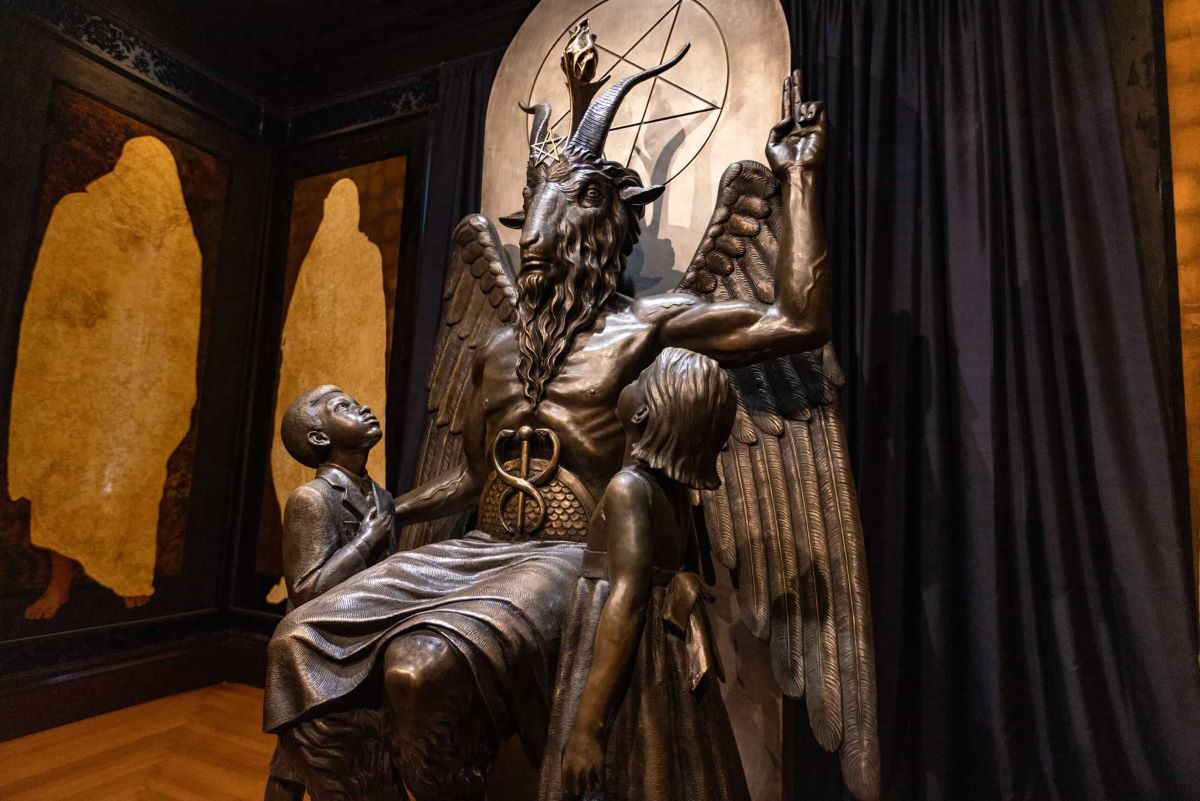
Satan, often depicted as the embodiment of evil, has intrigued and frightened humanity for centuries. Satan is a complex figure whose image has evolved over time, from ancient texts to modern media. This character plays a pivotal role in various religious doctrines, symbolizing temptation, rebellion, and the struggle between good and evil. Our journey through 30 facts about Satan will uncover lesser-known details about this enigmatic entity, shedding light on its origins, how different cultures perceive it, and its influence on art, literature, and popular culture. Whether you're a scholar, a curious reader, or someone fascinated by the supernatural, these insights will offer a comprehensive understanding of one of history's most infamous figures.
Origins of Satan
Satan, a figure shrouded in mystery and fear, has fascinated humanity for centuries. Let's explore some intriguing facts about his origins.
- Satan is derived from the Hebrew word "ha-Satan," meaning "the adversary" or "the accuser."
- In the Old Testament, Satan appears as a member of God's court, testing the faith of humans.
- The Book of Job presents Satan as a challenger, questioning Job's righteousness.
- Christianity transformed Satan into a rebellious fallen angel, opposing God.
- Islam refers to Satan as Iblis, a jinn who refused to bow to Adam.
Satan in Different Religions
Satan's role and depiction vary across different religions. Here are some key differences.
- In Judaism, Satan is not an evil being but a servant of God, testing human faith.
- Christianity views Satan as the ultimate embodiment of evil, tempting humans to sin.
- Islam sees Iblis as a tempter, leading humans astray from God's path.
- Hinduism has no direct equivalent of Satan but features various demons and evil spirits.
- Buddhism mentions Mara, a demon who represents temptation and distraction from enlightenment.
Satan in Literature and Pop Culture
Satan has been a prominent figure in literature and pop culture, often symbolizing ultimate evil.
- Dante's Inferno depicts Satan as a giant, three-faced beast trapped in ice.
- John Milton's Paradise Lost portrays Satan as a tragic, rebellious hero.
- Goethe's Faust features Mephistopheles, a devilish figure tempting Faust.
- The Exorcist popularized the idea of demonic possession in modern horror.
- Supernatural TV series explores various mythologies, including Satan as Lucifer.
Symbols and Representations of Satan
Satan is often depicted with specific symbols and imagery. Let's look at some common representations.
- Baphomet, a goat-headed figure, is often mistakenly associated with Satan.
- The pentagram, especially inverted, is linked to Satanism and black magic.
- The serpent in the Garden of Eden is considered a manifestation of Satan.
- Horns and a tail are common features in artistic depictions of Satan.
- Red skin and a pitchfork are popularized by modern media but not rooted in ancient texts.
Satanic Rituals and Beliefs
Satanism, a controversial and often misunderstood belief system, has its own rituals and practices.
- The Church of Satan, founded by Anton LaVey in 1966, promotes individualism and self-indulgence.
- LaVeyan Satanism does not worship Satan but uses him as a symbol of personal freedom.
- The Satanic Temple focuses on political activism and separation of church and state.
- Rituals in Satanism often involve symbolic acts, not actual worship of a deity.
- Satanic Panic in the 1980s led to widespread fear and false accusations of ritual abuse.
Misconceptions About Satan
Many misconceptions surround Satan, often fueled by fear and misinformation. Here are some common myths debunked.
- Satanists do not sacrifice animals or humans; most are law-abiding citizens.
- Satan is not the ruler of Hell in Christian theology; he is a prisoner there.
- Lucifer and Satan are often conflated, but Lucifer originally referred to the "morning star."
- Satanic symbols are not inherently evil; their meanings vary across cultures.
- Satan is not omnipotent or omniscient; he is a created being with limited power.
A Final Look at the Prince of Darkness
We've journeyed through a realm of myths, beliefs, and historical facts about Satan, uncovering aspects that span cultures, religions, and centuries. From his origins in ancient texts to his depiction in modern media, the figure of Satan has evolved, reflecting humanity's deepest fears and moral dilemmas. This exploration reveals not just the evolution of a supernatural entity but also offers a mirror to society's changing values and ethics. Whether seen as a literal being or a symbolic representation of evil, Satan continues to fascinate and provoke thought across different spectrums of belief. As we close this chapter, remember, the power of these stories lies not in their ability to scare but in their capacity to make us reflect on the nature of good and evil within ourselves and the world around us.
Was this page helpful?
Our commitment to delivering trustworthy and engaging content is at the heart of what we do. Each fact on our site is contributed by real users like you, bringing a wealth of diverse insights and information. To ensure the highest standards of accuracy and reliability, our dedicated editors meticulously review each submission. This process guarantees that the facts we share are not only fascinating but also credible. Trust in our commitment to quality and authenticity as you explore and learn with us.


